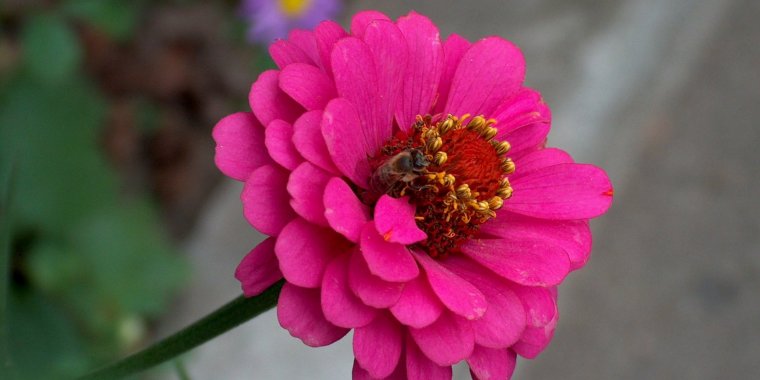| News / Science News |
Study Finds Mixed News About Bee Populations
There’s a glimmer of hope for the American bee population. But, according to a new study, the outlook for this critical insect is mostly grim. Researchers report a slowing of the rate of decline in the bee population over the past year, dropping to its lowest since 2011-2012.

A new study shows that while American bee populations are still falling, they may have slowed. Image credit: Gh. Mănoiu / The Titi Tudorancea Bulletin
But, both commercial and small-scale beekeepers lost 33 percent of their honey bee colonies between April 2016 and April 2017.
"While it is encouraging that losses are lower than in the past, I would stop short of calling this 'good' news," said Dennis van Engelsdorp, an assistant professor of entomology at the University of Maryland and project director for the Bee Informed Partnership, in a summary of the study.
"Colony loss of more than 30 percent over the entire year is high," he added. "It's hard to imagine any other agricultural sector being able to stay in business with such consistently high losses."
Researchers point to many causes for the drop in bee populations, with parasites, particularly the varroa mite, and other diseases as the main culprits. Pesticides are also a factor, according to the study, particularly among commercial beekeepers. The researchers describes like a kind of synergy among all the causes that amount to worsening each individual problem.
"This is a complex problem," said Kelly Kulhanek, a graduate student in the UMD Department of Entomology who helped with the survey. "Lower losses are a great start, but it's important to remember that 33 percent is still much higher than beekeepers deem acceptable. There is still much work to do."
The annual survey, which has been conducted for 11 years, aims to find why bee colonies are suffering, a problem that can have big consequences for human beings, given that honey bees pollinate $15 billion worth of U.S. agriculture annually. Almonds, researchers say are a perfect example: their growth is entirely dependent on bees for pollination.
"Bees are good indicators of the health of the landscape as a whole," said Nathalie Steinhauer, a graduate student in the UMD Department of Entomology who leads the data collection efforts for the annual survey. "Honey bees are strongly affected by the quality of their environment, including flower diversity, contaminants and pests....Honey bee health is a community matter." (VOA)
YOU MAY ALSO LIKE



